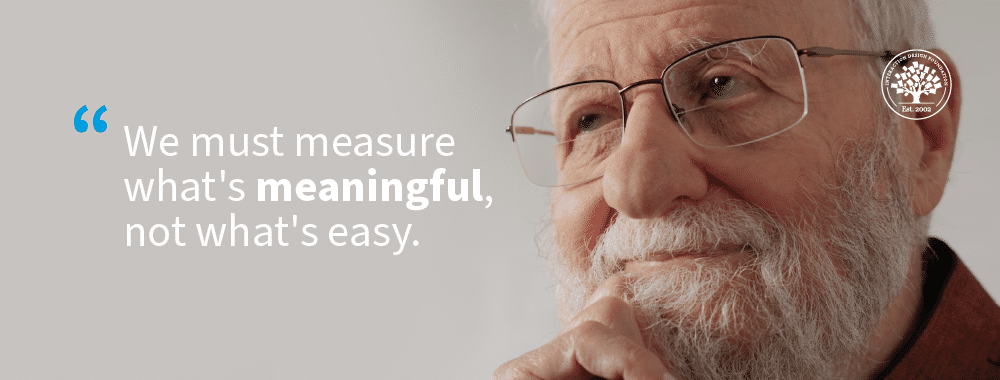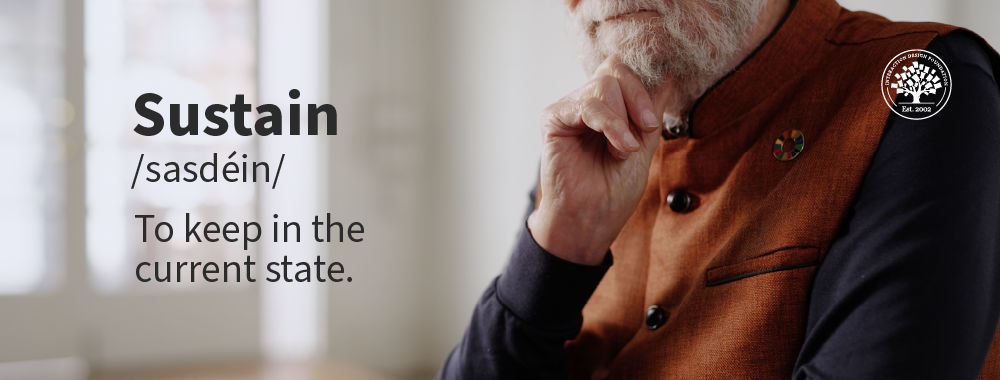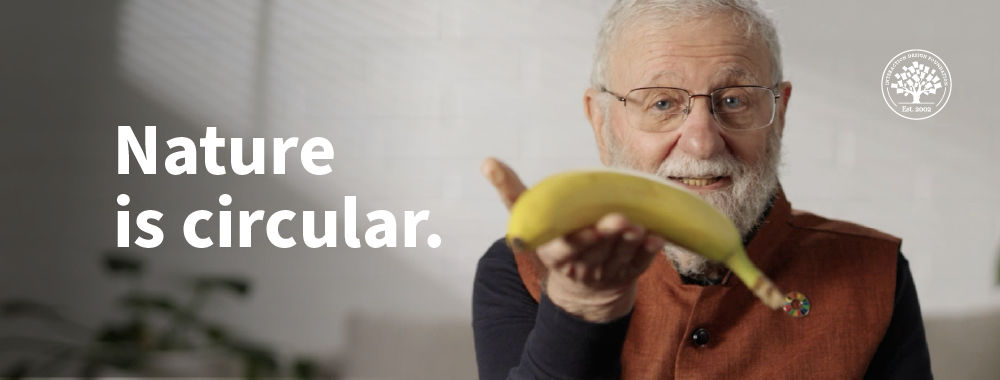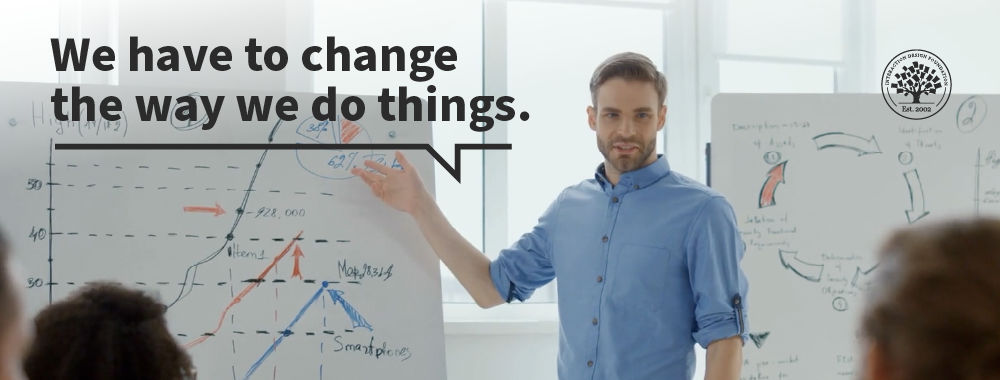Use More Meaningful Measurements in Design and in the World

- 472 shares
- 3 mths ago
Sustainable design creates long-term solutions and helps societies ensure the well-being of their people and harmony with the environment for generations.
Designers reduce waste by making products that are recyclable, compostable and even better - endlessly reusable. They might also create a manufacturing process to reduce or remove carbon dioxide emissions, to support a circular economy. As the most significant challenge of our age, many of these designs relate to environmentalism or combatting climate change.
One of the world’s leading User Experience and design experts, Don Norman, help us understand how to design for a better world. Spoiler alert: sustainability is not enough.
A sustainably designed product or service is one that considers the entire lifecycle of the product during development, from manufacturing to disposal. A truly sustainable design is optimized for reuse.
A physical product might use recycled materials, be manufactured in a plant that doesn’t use fossil fuels, or follow incremental modular design principles to become more sustainable. After the product is created, it should be useful for a long time. It should be designed in a way so it can be reused or repaired, or biodegrade once it is done being useful.
A sustainable service, designed with participatory design principles, should provide what the user needs while reducing the use of non-renewable resources. Ride-sharing apps are an example of a service that ultimately reduces the need for every individual to own a car. This has the potential to reduce waste since fewer cars are necessary. Options to carpool can also reduce gasoline use, further increasing the sustainability of the service.
Carsharing services such as GoTo Carsharing seek to reduce car ownership using the Transportation-as-a-Service model.
© GoTo Mobility, Fair Use
© Interaction Design Foundation, CC BY-SA 4.0
As important as sustainability is, it’s clear that the effects of climate change are already happening. In that regard “sustainability” is not enough, since that effectively means keeping things the way they are.
We have to stop creating products that create great harm to the planet. We have to create products that can last for a long time and that can be repaired and upgraded when they become outdated or stop working. Alternatively, we can design as nature does. We can design in a way where the waste itself is a valuable substance that can be reused by nature. Think of an orange. It’s protected by the peel (not a plastic wrap). Once we peel the orange the peel will naturally decompose and function as fertilizer for the planet.
User experience designers who work solely on digital products might think sustainability is irrelevant for software or applications. That is somewhat true, but new industries like crypto mining have demonstrated that even purely digital products can have unforeseen ecological impacts.
Designers can develop energy-efficient apps that work on older devices to reduce energy consumption and slow the obsolescence of older devices, which causes more waste.
Dark mode vs. light mode.
© Apple Inc, Fair-Use
Even something as simple as a “dark mode” for the UI of an app can reduce the amount of strain on the battery of a smartphone or tablet, thus reducing energy consumption. If everyone who uses the app uses dark mode, it can have a significant impact.
Traditionally, UX design has primarily focused on human-computer interactions. However, we can scale up the practices of design thinking, user research, product design and interaction design to even larger projects. Now more than ever, designers are called on to rethink infrastructure, education and transportation to create more sustainable models on a national or even global scale.
Sustainable design processes include reforming energy-efficient infrastructure or designing sustainable buildings for housing.
The founder of User Experience, Don Norman, has coined the term “Humanity-Centered Design” to give a name to this movement and inspire designers to design a better world for all of us.
If you want to learn more about sustainable design, take our course: Design for a Better World with Don Norman.
Norman, Donald A. Design for a Better World: Meaningful, Sustainable, Humanity Centered. Cambridge, MA, MA: The MIT Press, 2023.
Read more articles and essays by Don Norman on JND.org.
For an example of a large-scale sustainable design problem, read about the circular economy.
The UN’s 17 Goals for sustainable development
UX (user experience) design affects sustainability by shaping how people use resources, both digital and physical. Thoughtful UX can reduce energy consumption, extend product life cycles, and encourage responsible user behavior. For example, a ride-sharing app that simplifies carpooling helps reduce emissions. Likewise, designing interfaces that encourage repair over replacement can reduce e-waste.
Designers also influence server load and data transfer through choices in UI complexity. Lightweight, efficient interfaces consume less bandwidth and processing power, which helps lower digital products' carbon footprint. Even small design decisions, like minimizing autoplay videos or defaulting to low-energy settings, add up at scale.
Even minor improvements matter. Designers hold the power to build more sustainable futures through everyday choices.
Watch as UX Pioneer and the Godfather of UX Design, Don Norman explains important points about sustainable design:
Take our course, Design for a Better World with Don Norman.
Don Norman outlines key principles of sustainable design that urge designers to think long-term, reduce waste, and create products that work in harmony with people and the planet. First, he emphasizes durability and longevity—designers should create products that last and are easy to repair, not just to replace.
Next, Norman champions humanity-centered design—which itself has five principles and is an expansion of human-centered design. Humanity-centered design centers on how products align with real user needs, align with the needs of those whom the making and disposal of products affect, and don’t encourage overconsumption or unnecessary features. He also stresses circular thinking: products should be reusable, recyclable, or biodegradable, minimizing their environmental impact from start to finish.
Another core idea is systems thinking. Designers must consider the entire lifecycle of a product—manufacturing, use, and disposal—and understand how each part affects the larger ecological and social system.
These principles shift UX design from being convenience-focused to planet-conscious and sustainable.
Watch as UX Pioneer and the Godfather of UX Design, Don Norman explains important points about sustainable design:
Take our course, Design for a Better World with Don Norman.
Don Norman argues that human-centered design (HCD) falls short when it focuses too narrowly on individual needs and ignores broader systems. Traditional HCD often optimizes for user satisfaction and convenience without considering long-term environmental or social consequences. For example, designing faster delivery interfaces may delight users but worsen carbon emissions and exploit gig workers.
This user-first mindset fails to account for sustainability, equity, and system-wide ripple effects. Norman calls for an expanded approach—humanity-centered design—that balances personal needs with collective well-being and planetary health.
He urges designers to think beyond immediate users and consider future generations, ecosystems, and cultural impact. In short, HCD must evolve to address the complexity of real-world challenges, not just usability.
Watch as Don Norman explains important points about humanity-centered design:
Take our course, Design for a Better World with Don Norman.
To design digital products that support sustainability, start by reducing energy and data consumption. Optimize your interface for speed and simplicity—lightweight pages load faster and use less server power. Avoid autoplay media, oversized images, and bloated code that waste resources.
Design for longevity, too. Create systems that evolve with user needs instead of pushing frequent replacements. Think modular updates instead of total redesigns. Support repairability and extend product lifespans by offering clear help, updates, and accessible documentation.
Also, encourage mindful behaviors. You can use nudges, like defaulting to eco-friendly settings or highlighting energy usage, to help users make sustainable choices. Prioritize inclusive, low-bandwidth experiences to reach more users while using fewer resources.
Every design choice—from architecture to interface—can reduce environmental impact when you approach it with an intention for sustainability.
Watch as Don Norman explains important points about sustainable design:
Take our course, Design for a Better World with Don Norman.
To balance user needs with environmental impact, prioritize usability and sustainability. Instead of choosing between them, integrate eco-conscious thinking into the user experience. For example, simplifying interfaces to reduce data load will meet users’ desire (or need) for speed while cutting energy use.
Choose durable over disposable solutions. Design features that meet long-term needs so users don’t constantly upgrade or discard. Also, offer transparency: let users see their environmental impact and offer low-impact choices, like dark mode or minimal data settings.
When you expand your design goals from “user-centered” to “humanity-centered”—a mindset where good UX supports both individual goals and the planet’s well-being—you can shift up a gear to protect communities and the environment. Sustainable design doesn’t mean compromising quality. It means creating smarter, more intentional experiences that serve users today without harming tomorrow.
Watch as Don Norman explains important points about sustainable design:
Take our course, Design for a Better World with Don Norman.
To assess sustainability in UX projects, start with lifecycle analysis (LCA). This method evaluates the environmental impact of a product from design to disposal, measuring energy use, carbon emissions, and material waste. LCA helps teams understand where the most significant sustainability gains are possible.
Use carbon footprint tools to estimate the energy impact of digital experiences, especially data-heavy ones like video, animation, or high-resolution imagery. Also, you can track server load and optimize code to reduce resource consumption.
Behavioral analytics show how users interact with your product. This helps you cut redundant features and streamline the experience, lowering digital waste. Conduct user testing with sustainability in mind; ask how features influence user choices and behaviors.
Last, but not least, include sustainability goals in your UX design process and explain to stakeholders, especially in management, why it’s essential. Make energy efficiency, accessibility, and resource use part of your success metrics.
Enjoy our Master Class Exclusive: Design for a Better World, a Discussion with Don Norman, Founding Director - Design Lab, University of California, San Diego. Co-Founder, Nielsen Norman Group.
Watch as Don Norman explains key insights about designers’ role in sustainable projects:
To use personas and journey maps in sustainable UX design, focus on values, behaviors, and environmental context, not just goals and pain points. Build eco-conscious personas that represent users who care about sustainability or are impacted by sustainability. For example, a persona might value low-energy apps or prefer repairable devices. It’s not about a lofty ideal; real people care about their planet.
When mapping user journeys, highlight moments that involve high resource use, like streaming content, printing, or buying replacements. These touchpoints show where designers can reduce environmental impact—maybe by offering alternatives like downloads, digital receipts, or repair guides.
Also, include emotional drivers tied to sustainability: pride in saving energy or frustration with waste. This helps design more motivating, low-impact experiences.
You can align product goals with ethical, long-term design strategies by weaving sustainability into your personas and journeys.
Watch as William Hudson, User Experience Strategist and Founder of Syntagm Ltd, explains why design without personas falls short:
Enjoy our Master Class Exclusive: Design for a Better World, a Discussion with Don Norman, Founding Director - Design Lab, University of California, San Diego. Co-Founder, Nielsen Norman Group.
When talking to stakeholders about sustainability in UX design, focus on the business value and the environmental impact. Frame sustainable UX design as a way to reduce costs; lighter interfaces use less bandwidth and server power, which saves money. Highlight growing consumer demand for ethical, eco-conscious products. Sustainability isn’t just good for the planet; it’s good for brand reputation and customer loyalty too.
Use real data. Show how your design choices can cut emissions, speed up performance, or improve accessibility. Link these benefits to customer satisfaction, retention, and system efficiency KPIs.
Also, speak their language. If they care about innovation, frame sustainability as a competitive edge. If they focus on risk, talk about regulations and long-term viability. Keep it practical and goal-aligned, and you’ll get lasting buy-in.
Watch Don Norman discuss what designers can do to influence the brands they work for, for the better:
Take our course, Design for a Better World with Don Norman.
Löchtefeld, M. (2023). User experience considered harmful (for the planet). arXiv preprint arXiv:2305.11874.
In this thought-provoking paper, Markus Löchtefeld critiques the prevailing emphasis on user experience (UX) within the tech industry and academia, arguing that such focus can negatively impact the sustainability of ICT devices. By presenting two illustrative examples, he advocates for the inclusion of sustainability perspectives in UX metrics, emphasizing the need to consider third-order effects. This work has sparked discussions in the Human-Computer Interaction (HCI) community about integrating environmental considerations into UX design practices.
Huang, T. (2016). Disruptive UX for sustainability: Radically resolving user needs is good for business and environment. In M. Kurosu (Ed.), Design, user experience, and usability: Novel user experiences (pp. 485–493). Springer.
Tao Huang’s conference paper introduces the concept of “Disruptive UX for Sustainability,” advocating for a radical rethinking of business paradigms through user experience (UX) design. The paper discusses how UX and Human-Computer Interaction (HCI) can drive sustainability by encouraging reduced consumption and promoting recycling. It emphasizes the role of UX as a bridge between hardware and software, essential for successful sustainability initiatives. Huang also explores the cultural shift towards the sharing economy and identifies challenges in UX research related to sustainability. This work contributes to the discourse on leveraging UX design for environmental and societal benefits.
Frick, T. (2016). Designing for Sustainability: A Guide to Building Greener Digital Products and Services. O’Reilly Media. Publisher
Tim Frick’s book is a key text for digital professionals seeking to integrate environmental ethics into UX and web design. It provides actionable strategies for reducing the carbon footprint of digital services through performance optimization, thoughtful content strategies, and sustainable hosting. Frick emphasizes the importance of inclusive, accessible design in building long-term value and usability. The book stands out for its practical frameworks and real-world examples, making it a critical resource for anyone looking to align design with sustainability goals and corporate social responsibility initiatives.
Chick, A., & Micklethwaite, P. (2011). Design for Sustainable Change: How Design and Designers Can Drive the Sustainability Agenda. AVA Publishing.
This pivotal book by Anne Chick and Paul Micklethwaite redefines the designer's role in addressing global sustainability. Unlike narrow "green design" approaches, it integrates design thinking with broader socio-environmental challenges, exploring how designers can influence behavioral, systemic, and lifestyle changes. The book maps out the evolution from traditional product-focused design toward participatory, open-source, and service-oriented practices. It is especially valuable for UX and design professionals seeking to expand their influence into strategic, ethical, and transformative domains. Through case studies, theory, and tools, it provides a roadmap for engaging design as a force for sustainable innovation and responsible change across industries and communities.
Remember, the more you learn about design, the more you make yourself valuable.
Improve your UX / UI Design skills and grow your career! Join IxDF now!
You earned your gift with a perfect score! Let us send it to you.
We've emailed your gift to name@email.com.
Improve your UX / UI Design skills and grow your career! Join IxDF now!
Here's the entire UX literature on Sustainable Design by the Interaction Design Foundation, collated in one place:
Take a deep dive into Sustainable Design with our course Design for a Better World with Don Norman .
Master complex skills effortlessly with proven best practices and toolkits directly from the world's top design experts. Meet your expert for this course:
Don Norman: Father of User Experience (UX) Design, author of the legendary book “The Design of Everyday Things,” and co-founder of the Nielsen Norman Group.





We believe in Open Access and the democratization of knowledge. Unfortunately, world-class educational materials such as this page are normally hidden behind paywalls or in expensive textbooks.
If you want this to change, , link to us, or join us to help us democratize design knowledge!
